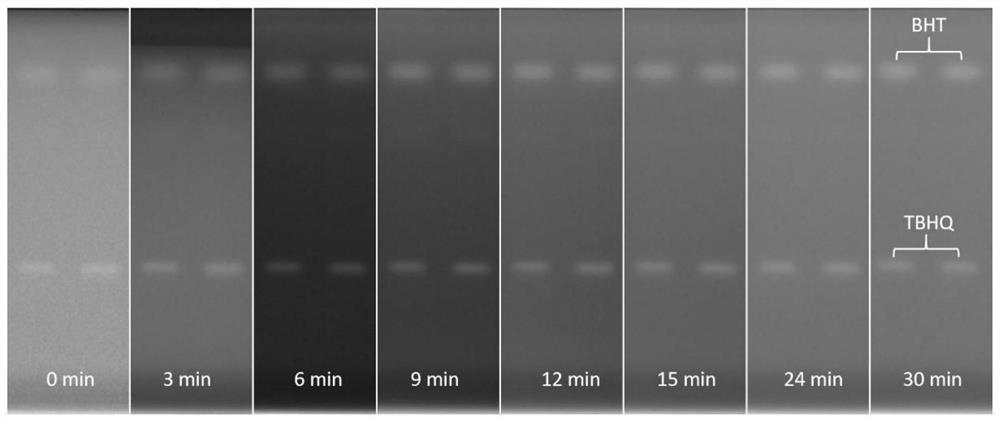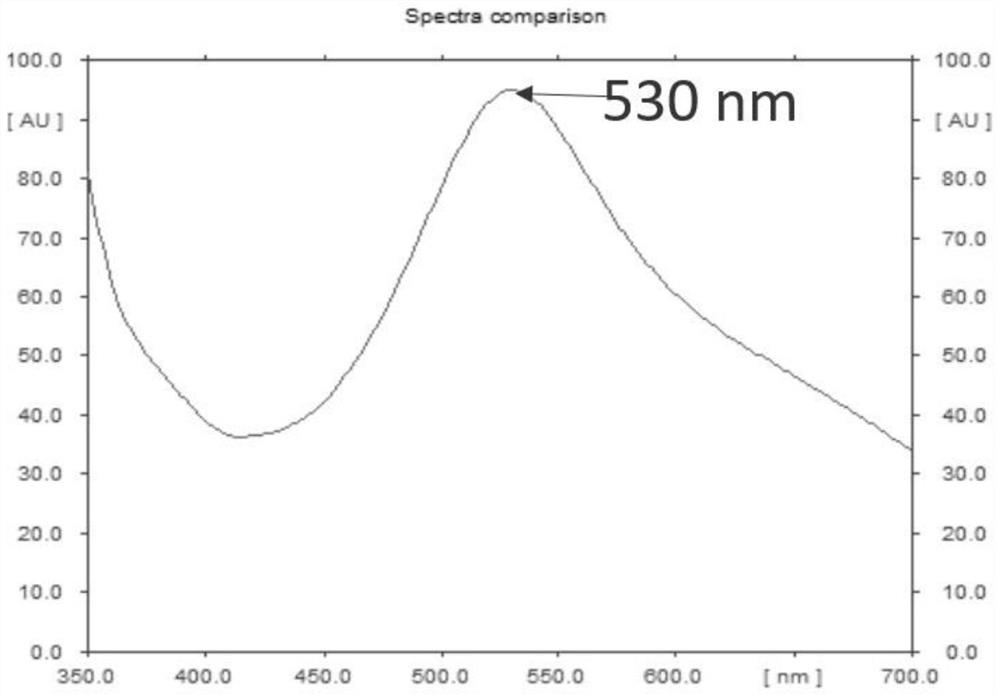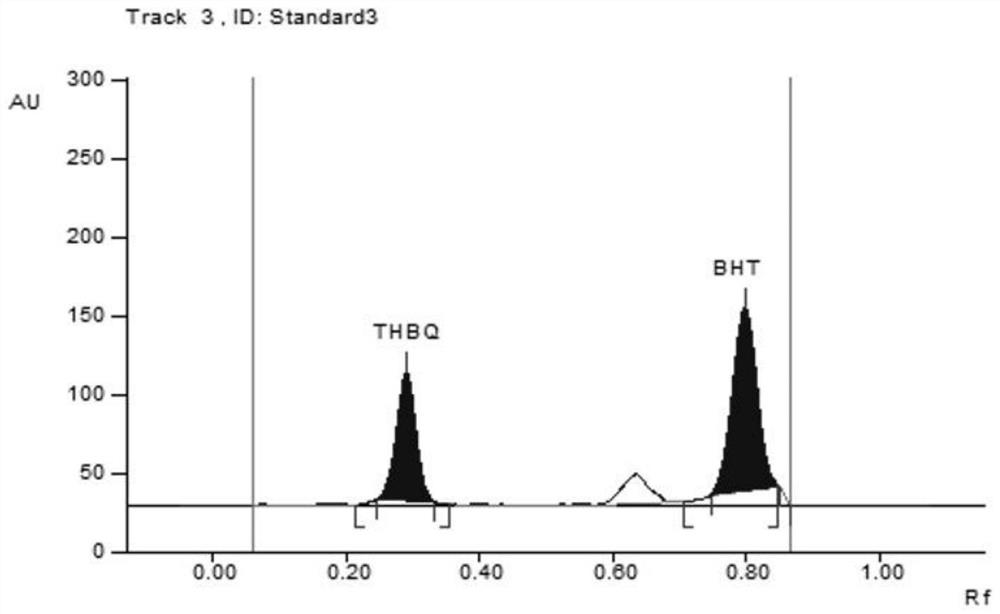hptlc-biological imaging screening method for phenolic antioxidants synthesized from oils and fats
A phenolic antioxidant and biological technology, applied in the direction of instruments, measuring devices, scientific instruments, etc., can solve the problems of low sensitivity and specificity, interference, etc.
- Summary
- Abstract
- Description
- Claims
- Application Information
AI Technical Summary
Problems solved by technology
Method used
Image
Examples
Embodiment 1
[0032] (1) Preparation of BHT and TBHQ standard solutions: use methanol as a solvent, dilute with methanol to prepare a standard solution with a concentration of 0.01mg / mL;
[0033] (2) High-efficiency thin-layer chromatography separation: 2-8ul standard solution and edible oil sample extract are used for non-contact purging spotting with Linomat 5, and after spotting is completed, use developing solution (toluene / ethyl acetate / methanol, 9 / 1 / 1, v / v / v) unfold, unfold upward 60mm, take out the silica gel plate and place it on a flat heater at 50°C for 3 minutes to fully dry;
[0034] (3) Specific bioimaging: Evenly spread the biological developer solution on the unfolded silica gel plate by dipping, take it out and put it into a thin-layer imaging system, and place it under the irradiation of a white light to image the silica gel plate every 3 minutes , Continuously monitor the influence of different reaction times on the developing effect. Such as figure 1 As shown, within t...
Embodiment 2
[0037] (1) Spot the standard solutions containing 0.01mg / ml BHT and 0.01mg / ml TBHQ in a strip shape (6mm) on the silica gel plate to form 5 calibration points with a concentration gradient of 50-200 ng / zone, and make two parallel, and then develop the silica gel plate with toluene / ethyl acetate / methanol with a volume ratio of 9 / 1 / 1, dry it, and immerse it in the biological developing solution;
[0038] (2) Quantitative scanning by thin-layer scanner: place the silica gel plate after biological development in a thin-layer scanner for quantitative analysis, select the light source as deuterium lamp and tungsten lamp, fluorescence-reflection mode, and the emission wavelength is 530nm to obtain the optical density scan image as Figure 5 shown. After the scan, the scanned area is taken as the y-axis, and the amount of the target substance is taken as the x-axis to create a standard curve. The result is as Figure 6 shown.
Embodiment 3
[0040] (1) Simultaneous detection of BHT and TBHQ in soybean oil and sunflower oil, respectively.
[0041]Pretreatment of the edible oil sample: mix 1 g of the edible oil with 10 ml of methanol, shake in a vortex mixer for 3 minutes, centrifuge at 5000 rpm, filter through a 0.45-micron membrane, perform chromatographic separation, and refrigerate at 4°C.
[0042] (2) Using 0.5 MPa nitrogen gas as the carrier, use a 100 μl syringe (CAMAG) to accurately spot samples and antioxidant standards on a 10×10 cm silica gel plate with a 100 μl syringe (CAMAG). 8mm from the bottom, 12mm from the left end, and 1.7mm between the strips. After sample pointing, use the ADC-2 (CAMAG) developing instrument to develop. Before developing, inject 10 mL of mobile phase into another tank to make the cylinder reach a saturated state. Take 10 mL of the optimized developing solution (toluene / ethyl acetate / methanol=9 / 1 / 1 (v / v / v)), develop 60 mm upward, take it out, and place it on a flat heater at 50°...
PUM
| Property | Measurement | Unit |
|---|---|---|
| concentration | aaaaa | aaaaa |
Abstract
Description
Claims
Application Information
 Login to View More
Login to View More - R&D
- Intellectual Property
- Life Sciences
- Materials
- Tech Scout
- Unparalleled Data Quality
- Higher Quality Content
- 60% Fewer Hallucinations
Browse by: Latest US Patents, China's latest patents, Technical Efficacy Thesaurus, Application Domain, Technology Topic, Popular Technical Reports.
© 2025 PatSnap. All rights reserved.Legal|Privacy policy|Modern Slavery Act Transparency Statement|Sitemap|About US| Contact US: help@patsnap.com



